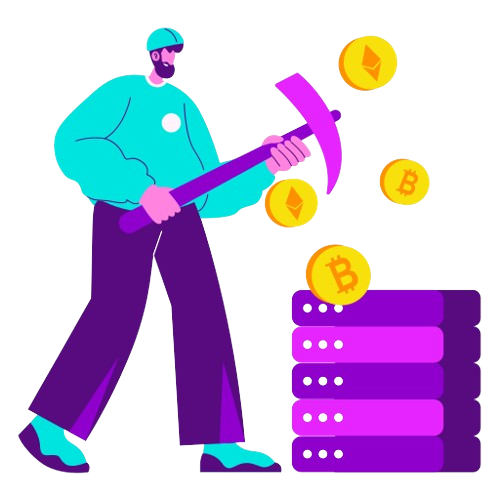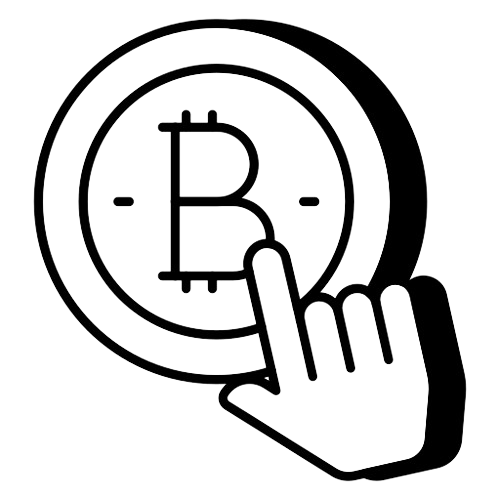
Bitcoin and the broader cryptocurrency landscape evolved dramatically over the past decade. But looking ahead, 2024 promises acceleration into the next era of digital asset innovation. Specifically, decentralized finance, or DeFi, stands positioned to push blockchain ecosystems into the financial services mainstream through disruptive applications optimizing lending, trading, investing and more. Integrating the best of cryptocurrency, software programming and financial engineering, DeFi codifies complex financial instruments using open-source software protocols able to plug and play across blockchains. Removing opacity and barriers to unleash radical transparency, accessibility and composability between financial building blocks that traditionally remain siloed.
While still early stage, DeFi building blocks offer a glimpse into the automated finance applications of the future. One combining decentralized governance, security and connectivity across fragmented markets. Making this emerging arena prime for exploration. This article reviews 10 leading DeFi protocols spanning crypto lending markets to algorithmic trading, insurance coverage and beyond. Demonstrating opportunities for investors willing to look past Bitcoin towards the next generation of programmable blockchain finance.
Top 10 DeFi Projects to Watch
The DeFi landscape spans hundreds if not thousands of nascent applications across lending, trading, analytics, insurance and more. But consolidating down, these 10 projects represent leaders at the forefront of decentralized finance, prime for adoption today:
Aave – An open-source liquidity protocol facilitating decentralized cryptocurrency lending and borrowing. Users can lend assets to earn yield or borrow assets using other crypto as collateral.
Uniswap – A leading decentralized exchange utilizing automated liquidity pools rather than order books to enable token swapping sans intermediaries.
Compound – Algorithmic money markets allow users to supply crypto assets into pools to earn yield or borrow assets against collateral at transparent rates.
MakerDAO – Issuing the DAI stablecoin pegged to $1, also facilitates decentralized collateralized lending like Compound. A core DeFi building block.
Yearn Finance – An aggregator for lending protocols like Aave plus other DeFi products, automatically directing assets to the highest earning yields.

Synthetix – Issuing synthetic assets mirroring the value of real-world assets like stocks, commodities, fiat currencies and more using collateral and trading fees.
Nexus Mutual – A decentralized insurance alternative where members pool funds into a mutual to cover smart contract risks across protocols.
Augur – Utilizing prediction markets and the “wisdom of the crowd” concept allowing users to create and bet on event outcome prediction markets.
0x – An open-source infrastructure layer powering decentralized cryptocurrency exchanges between peers and liquidity pools using an off-chain order relay.
Chainlink – Providing real-world data feeds to blockchains (like asset prices) necessary to enable DeFi projects reliant on external system inputs and endpoints.
Diving Deeper on DeFi Personal Finance
Taking a deeper look at some leading DeFi money management protocols provides a solid launchpad for hands-on exploration. Whether seeking to maximize yield on crypto holdings or access liquidity tools, DeFi lending and borrowing markets offer cutting-edge financial services. For example, lending protocol Aave streamlines capital provision into pooled money markets to earn attractive interest, while allowing borrowers to tap funds using collateral across flash loan and credit line options.
On the saving and investing side, users can optimize “savings” account style yields by reacting to market demand by selecting variable rate lending across crypto assets like ETH, stablecoins and more. Or pick fixed yield-bearing tokens for static returns. This open market connectivity empowers users to seek the highest risk-adjusted yields across decentralized protocols using a single dashboard.
For borrowing needs, consumers’ access dramatically expanded, yet overcollateralized liquidity sources using their existing crypto holdings as backing. Avoiding credit checks while retaining portfolio upside. Borrowing against Bitcoin while retaining price exposure demonstrates a uniquely DeFi approach to personal finance. Not possible to use traditional banks.
By integrating these blended DeFi money management protocols like Aave for yield maximization and borrowing into leading Bitcoin wallet apps, cryptocurrency investors unlock even more potential from holdings. No longer limited to basic receipt and transfer utility, wallets become the gateway to cutting-edge DeFi tooling for advanced crypto asset management techniques. All from an easy-to-use mobile interface powering both Web3 and Web2 (fiat) financial services in one.
The Growth Runway Ahead
While firmly in its infancy today, the pace of innovation across the DeFi landscape signals immense growth on the horizon. A look at adoption metrics demonstrates an astonishing trajectory. In just two years since early 2020, total value locked across DeFi protocols vaulted from $1 billion to over $100 billion by late 2022. Capturing over 15% of the total cryptocurrency market capitalization.

And more staggering, in four years since 2019, the numbers scale over 100X from $700 million locked on DeFi platforms to over $70 billion by the end of 2022. Far outpacing growth in traditional retail banking services.
Even with market volatility impacting crypto assets values since late 2021, the robust expansion in foundational DeFi infrastructure remains extremely bullish for decentralized finance equipping individuals with accessible Web3 financial tools.
Looking ahead to 2024, expectations for new decentralized finance applications and user growth show no signs of slowing down. As blockchain interoperability reaches escape velocity across protocols, consumer onboarding simplifies through consolidated wallet apps, and real-world assets tokenize into trustless environments, DeFi nears the turning point towards mainstream adoption. Unlocking open access to powerful levers previously controlled exclusively by institutions.
Power to the People
At its core, decentralized finance aims to empower everyday individuals by decentralizing access to profitable yet secure financial building blocks without rent-seeking intermediaries capturing value. Participating in lending markets, trading venues, insurance pools, prediction markets and more directly to optimize outcomes for participants rather than shareholders of corporations.
DeFi pulls back the curtain on traditionally opaque wealth management tools only accessible to high net worth and institutional investors. Democratizing money management for the masses. No longer restricted to ransomware payments and black market commerce, cryptocurrency wallets have evolved into gateways for intelligent Web3 finance.
Conclusion
The DeFi revolution reaches a turning point through 2024. Protocols once siloed across niche communities increasingly consolidate through standard interfaces and tokenized asset interoperability unlocking embedded network effects. Sophisticated financial services portability emerges rivaling traditional institutions by blending open source programmability with blockchain security and decentralization.
Early adopters must pay attention or risk missing investment opportunities and tools rivaling mainstream banking and investment offerings. Especially considering the exponential growth trajectory as decentralized finance bridges into traditional finance. Those able to dive deep across DeFi protocols using secure and integrated wallet frameworks stand ready to reap outsized returns over the coming years. Through 2024, DeFi will deliver on its promise to expand beyond traders speculating on cryptocurrencies towards actual utility for managing personal finances in a radically transparent and permissionless environment.